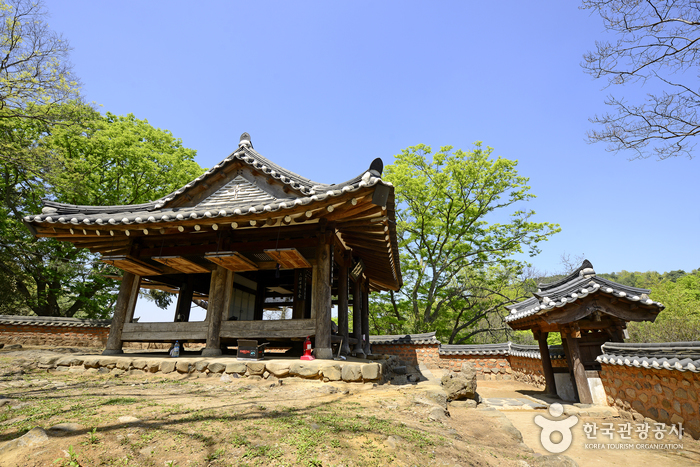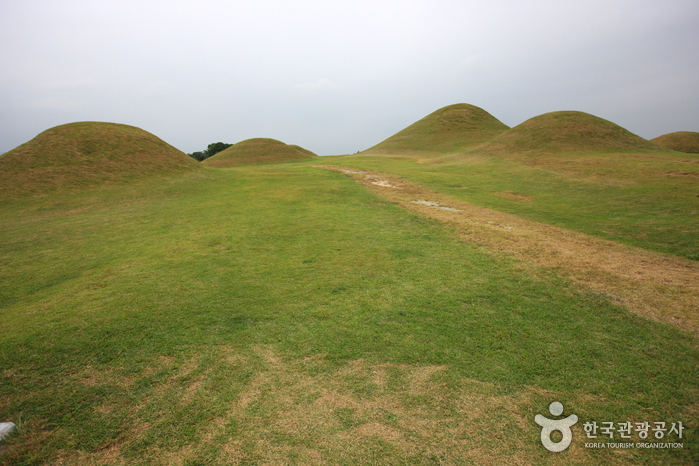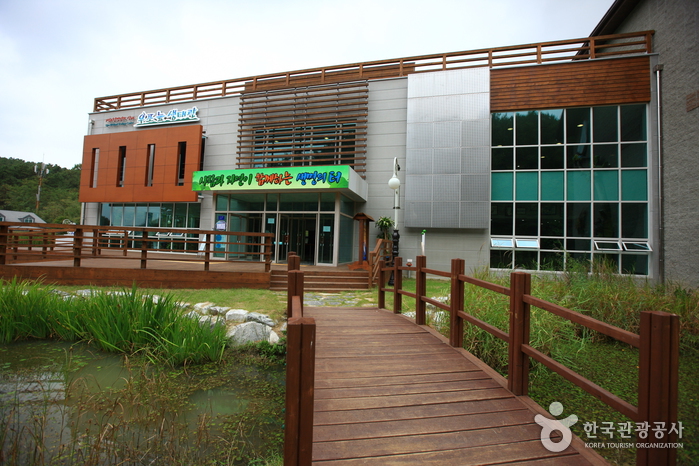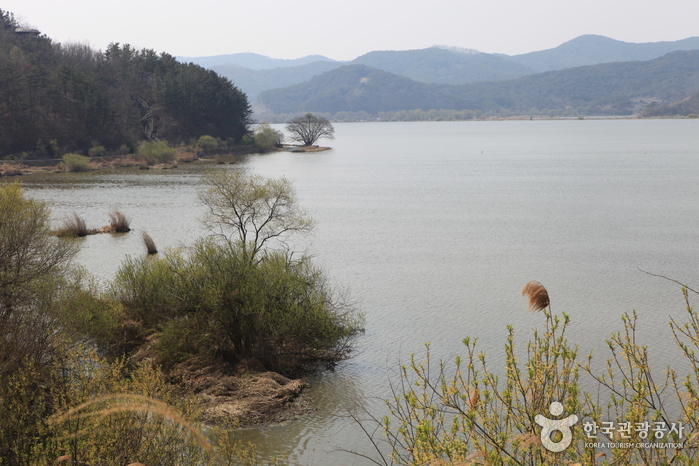Olive Young - Changwon Gamgye Branch [Tax Refund Shop] (올리브영 창원감계점)
14.3Km 2024-06-27
#104, and #105, 304, Gamgye-ro, Buk-myeon, Uichang-gu, Changwon-si, Gyeongsangnam-do
-
Mujinjeong Pavilion (무진정(함안))
15.1Km 2024-07-10
25 Goesan 4-gil, Haman-gun, Gyeongsangnam-do
Mujinjeong Pavilion was built atop a hill to enjoy the surrounding scenery. It was built in 1567 by the descendants of Mujin in honor of his memory. Mujin passed the government officer exam in 1483 and was promoted in 1507. The pavilion is built with three kan (space between pillars) in the front and two kan on the side, and a gabled roof. The floor is raised off the ground. There are no decorations on atop the pillars, showcasing the style during the early Joseon period.
Dalcheongyegok Valley (Changwon) (달천계곡(창원))
16.0Km 2024-02-28
145 Dalcheon-gil, Buk-myeon, Uichang-gu, Changwon-si, Gyeongsangnam-do
Dalcheongyegok Valley is a favored summer escape in Changwon, known for its clear valley waters flowing over wide rocks and dense surrounding foliage. A notable feature within the valley is a rock bearing the inscription "Dalcheon-dong" by Heo Mok, an official of the Joseon dynasty who chose this serene retreat for his retirement. During spring, the valley transforms into a renowned flower-viewing destination, adorned with the vibrant hues of azaleas in full bloom.
Ancient Tombs in Gyo-dong and Songhyeon-dong, Changnyeong (창녕 교동과 송현동 고분군)
18.1Km 2023-06-27
34, Changmil-ro, Changnyeong-gun, Gyeongsangnam-do
+82-55-530-1471
Songhyeon-dong Ancient Tombs, located under Mokmasanseong Fortress at the west foot of Hwawangsan Mountain, are large ancient tombs located in the southwest by the road leading to Hyeonpung. The Gyo-dong Ancient Tombs are dozens of ancient tombs that were once gathered around a large royal tomb, which among only eight tombs with damaged mounds now remain. Some of these ancient tombs were excavated by the Japanese between 1918 and 1919, and most of the relics were moved to Japan, and only some of them remain in Korea. According to the results of the investigation at the time, the large tombs were either built in a passageway form or an entry gate form.
It is said that a large number of relics such as jewelry made of various precious metals, including gold crowns, pure gold transplants, and copper, iron armour, and earthenware were excavated. The excavation report left by the Japanese is simple, so it is not possible to accurately grasp the structure of the Gyo-dong Ancient Tombs and the excavated relics. Twenty-one of the existing tombs have been restored so far, and only one of them has an accessible entrance.
The tombs in Songhyeon-dong are largely divided into two areas. Area 1 used to be large tombs with 80 tombs west of the foot of Mokmasan Mountain, but now only about 16 tombs remain. It is said that there were about 20 tombs in the second area near the stone Buddha in Songhyeon-dong, but now most of them have turned into rice paddies, and only a few tombs reveal their original appearance. Since the tombs are close to the Gyo-dong tombs, the structure of the tomb and the nature of the relics are believed to be almost the same. Along with the Gyo-dong tombs, a large number of relics were excavated in 1918, but the whereabouts of some of the relics are unknown.
Upo Wetland Eco Center (우포늪생태관)
18.3Km 2021-08-23
220, Uponeup-gil, Changnyeong-gun, Gyeongsangnam-do
+82-2-1330
Upo Wetland Eco Center is a wetland education center at the largest wetland in Korea. The center collects data and conducts research on various wild wetland animals such as birds, fish, mammals, amphibians, and reptiles, and displays these to the public as well as promotes the message that humans are also part of nature and educates visitors on how humans can live in harmony with nature.
To help visitors learn more about the ecological environment, the center consists of various galleries: Understanding Upo Wetland, the Four Seasons of Upo Wetland, Living Upo Wetland, Families of Upo Wetland, and Understanding the Ecological Environment. Each gallery exhibits dynamic models and videos, as well as hands-on interactive programs.
Olive Young - Changwon Palyong Branch [Tax Refund Shop] (올리브영 창원팔용점)
19.1Km 2024-06-27
445, Paryong-ro, Uichang-gu, Changwon-si, Gyeongsangnam-do
-
Changnyeong Upo Wetland (창녕 우포늪)
19.3Km 2023-02-13
220, Uponeup-gil, Changnyeong-gun, Gyeongsangnam-do
+82-55-530-1533
Upo Wetland is the largest natural wetland in Korea. The wetland takes up three different areas of Changnyeong-gun with a total size of 2,314,060 square meters. Created approximately 140 million years ago, the wetland was formed when the soft ground collapsed and water filled the area to form swamps and lakes, where dinosaurs played. Dinosaur footprints can be found at Sejin-ri near Upo Wetland.
Olive Young - Changwon Unicity Branch [Tax Refund Shop] (올리브영 창원유니시티점)
19.8Km 2024-06-26
1F, #1040, 47, Jungdongjungang-ro, Uichang-gu, Changwon-si, Gyeongsangnam-do
-
Junam Reservoir - Habitat for migratory birds (주남저수지 (철새도래지))
19.8Km 2020-06-09
26, Junam-ro 101beon-gil, Uichang-gu, Changwon-si, Gyeongsangnam-do
+82-55-225-2798
Junam Reservoir features a large migratory bird sanctuary spread throughout three reservoirs (Sannam, Junam, and Dongpan), and is one of Korea’s top nature-watching areas for visitors. It operates Ramsar Culture Center, ecology educational hall, bird-watching site and Junam Environment School free of charge and a guide tour is available to explore the reservoir with ecological explanations. In addition, a lotus field and flower road can be visited in the reservoir.





 English
English
 한국어
한국어 日本語
日本語 中文(简体)
中文(简体) Deutsch
Deutsch Français
Français Español
Español Русский
Русский